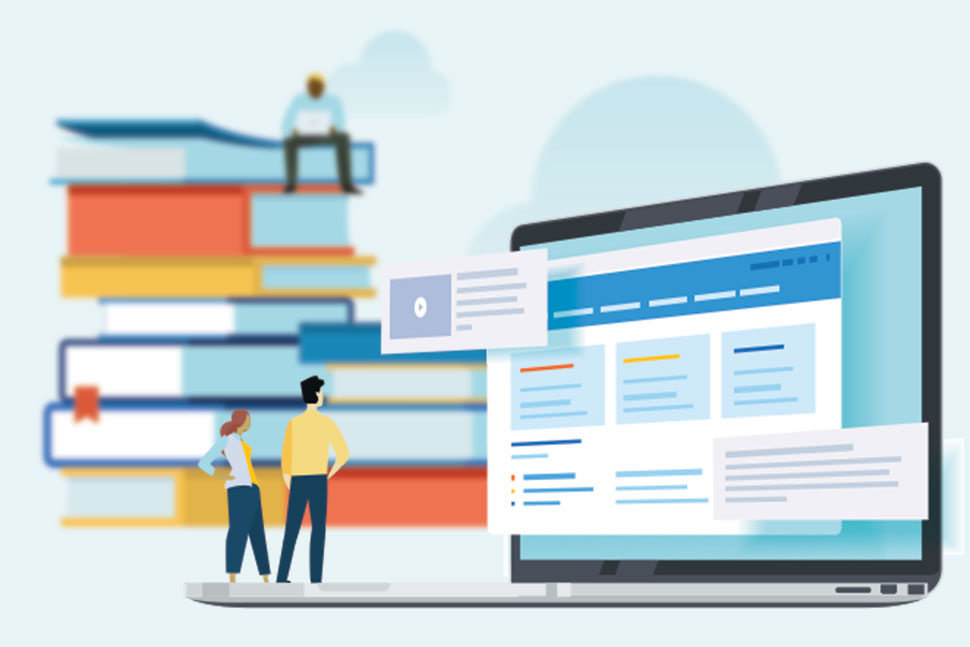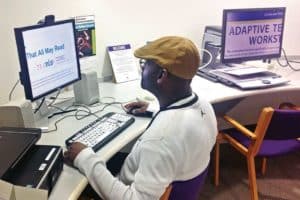
As the pandemic has limited in-person library services this year, many libraries are relying on their websites more than ever to deliver the services their communities need and expect. But a website is useful only if it enables patrons to find and do what they need. The increased importance of library websites during the COVID-19 era has highlighted common usability shortcomings—and opportunities.
“I get the feeling that many people think usability comes second to utility,” says Christina Manzo, user experience librarian at Radford University Carilion in Roanoke, Virginia. “I think they’ve become one and the same. There’s a seemingly endless supply of interfaces competing for our attention, so users are less willing to put up with a website that doesn’t work well.”
Manzo says the pandemic has not changed user needs, but amplified them. “Exhaustion and frustration are driving people today, because almost everything—even going to the grocery store—takes more time and energy,” she adds. As a result, users may be less patient if they are forced to, for example, refine searches several times in order to find the information they seek.
The pandemic has also affected the ways users look for information, says James Miller, discovery and sciences liaison librarian at Hollins University in Roanoke, Virginia, who notes that students are seeking online finding aids more often. Hits for a webpage housing the library’s videos doubled last fall, and online chat and ebook usage are also up. Meanwhile, he’s noticed that article downloads are down, possibly because burned-out researchers are looking elsewhere.
Maria Nuccilli, web developer at Wayne State University Library System in Detroit, reports increased website usage across the board. In the last week of the fall 2020 semester, the library’s LibGuides had 6,300 visits, up from 3,900 in the same period the year before. “Even now that the library is partially open, people are still going online more than ever,” Nuccilli says, which demonstrates the importance of effective interfaces. She also notes that the share of users who access websites via mobile devices has increased, making responsive design—which allows for easy viewing on smaller screens—more important than ever.
Accessibility and readability
One critical factor in user experience (UX) design for websites is accessibility for people with visual impairments and other disabilities. For example, moving, flashing, or blinking content can present obstacles to users with attention deficit disorder or visual processing disorders, while insufficient color contrast between text and background can make content illegible to low-vision users.
The World Wide Web Consortium’s Web Content Accessibility Guidelines are impressively thorough; many institutions have distilled them into easy-to-implement directives and folded them into their own accessibility guidelines. To start, Jaci Wilkinson, head of discovery and user experience at Indiana University Bloomington Libraries, suggests getting a demonstration of screen-reading technology to see firsthand how it works with your website—or at least reviewing YouTube tutorials to get a more concrete understanding of its capabilities
Nuccilli recommends employing browser extensions that flag accessibility issues, like Axe or Siteimprove. “They often show small things that will make a big difference,” she says. Other tools, like the Colour Contrast Check, can help evaluate whether a color combination will be readable by people with color vision deficiency or who are reading a site on a black-and-white screen.
Manzo, who has conducted usability tests on a variety of library websites, says “many patron interviews specifically mention language” as a UX challenge. Some users find terms like “research” vague, for example, while nonlibrarians may not be familiar with terms like “interlibrary loan.”
Wilkinson says that writing specifically for the web—where people tend to scan copy rather than reading it word by word—enhances a site’s readability. And features like front-loaded information, bulleted lists, and clear subheads help readers find the information they’re looking for, according to a report from the Nielsen Norman Group.
“One guiding principle is to meet the user where they are, whether it’s figuring out where to put a button or what kind of terminology to use,” Nuccilli says. “I don’t think there’s any such thing as a perfect library website, and you can’t make it once and have it stand indefinitely.” That means that constantly incorporating feedback from library staff and users is critical to keeping a website usable.
Testing solutions
“When everything shut down in March, our priorities immediately changed, and we needed to deliver information to users as quickly as possible,” Nuccilli recalls. Under normal circumstances, she would conduct brief, in-person usability tests weekly when introducing new services. During the pandemic, however, she relies more on feedback from librarians and analytics data in Google and Springshare (the digital platform behind LibGuides and LibAnswers) to evaluate how well new services are meeting user needs.
“Pre-pandemic, there were a lot of microtransactions in reference, instruction sessions, and circulation that could lead to ideas for usability improvements,” says Miller. Student circulation workers, for example, might note that students were having problems logging into their accounts. “Those interactions couldn’t happen this year, so it’s harder to define the problems that users are having.”
To counter this, the outreach librarian and other library staffers met with student groups and clubs over Zoom to ask how they use the library and whether they encounter any obstacles. The library used this feedback to prioritize information on the website. When a student mentioned that finding theses and dissertations was difficult, for example, the library created a finding aid for them.
“In some ways, the pandemic has made testing easier because users don’t need to be in the building,” Miller says. “There’s less setup, and students are comfortable online, because they’ve been doing that in their classes.”
Using multiple methods for testing and blending classic usability tests with guerrilla methods (wherein users are approached rather than recruited) may be appropriate in this landscape. Miller has applied and published research on a mixed-methods approach to usability testing, which combines techniques for assessing and improving usability (such as focus groups, analytics analysis, prototyping, and first-click testing) at all phases of a site’s development. This approach can provide a fuller picture of user needs and enhance resiliency in the face of events like the pandemic.
Making enhancements
An important first step: exploring perspectives beyond your own. “As a librarian, you know your system and its limitations,” Manzo says. “A new patron doesn’t have the benefit of that perspective—they just know if the website isn’t returning the information they need.”
Creating a handful of personas—descriptions of fictional people who represent your site’s major user groups—can help librarians keep multiple perspectives in mind. Personas generally include a name, job title and responsibilities, and demographics, as well as goals for using the site and the environment in which it’s being used. “Being aware of what information is most useful to different groups can really allow librarians to meet many user needs without information dumping,” Manzo says.
Personas should be supported by user research and analytics data. Once created, they not only shape decisions about what information meets the broadest range of needs but also identify any information gaps.
Card-sorting exercises can also be a useful practice for organizing websites, Manzo says. Users sort physical cards with subjects or menu labels into groups that make sense to them. The evaluator can define categories for users to sort cards into, or let users come up with their own. In some cases, users are also given blank cards to include information they want on the website but don’t see represented.
Nuccilli has helped launch several initiatives at Wayne State, including a new iteration of the online archive space for the Walter P. Reuther Library, which holds the campus’s labor archives. “We’re super grateful that we had already spent a lot of time observing users because it gave us a framework to build on,” Nuccilli says. Because of the library’s specialized focus, doing so required careful recruiting of participants and coordination with Reuther’s reference staff. “But it was valuable because when they went remote,” she says, “we were able to provide a better research experience.”
One technique that will always serve you well: continually asking questions. As Manzo says, “The good news about usability is that curiosity doesn’t cost you anything.”


